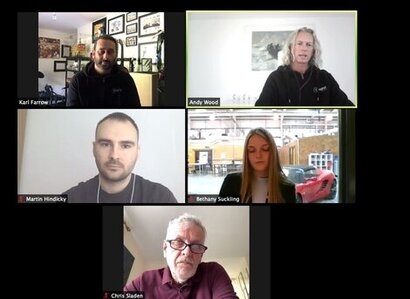
Geothermal delivery company CeraPhi Energy has built a model to create baseload clean energy, especially for heating and cooling, by repurposing existing and redundant oil and gas wells globally.
CeraPhi CEO Karl Farrow said tapping into the knowledge, experience and skills from more than half a century of oil and gas development will save time and expense of research and development and help create modular and flexible plug and play solutions to access and benefit from the “heat beneath our feet.”
Using its patented closed-loop technology to draw heat from underground is one of CeraPhi’s “tool box of solutions” to help bring down carbon emissions through multiple collaborations and partnerships.
“Every (oil and gas) well already has a heat source and specific temperature, and we have the technology to take advantage of it” Farrow said. “As we gain partners, we are learning every day - from oil and gas, the ground source heat pump industrys, even from aviation, on how to make generator turbines more efficient for the utilisation of geothermal energy.”
In addition to its own engineering, topside and sub-surface experts, and patented proprietary technology, Ceraphi is now working closely with well managers and specialists Fraser Well Management, ground heat source pumps experts, and with Genius Energy Lab and others, as together they forge further relationships across the geothermal development spectrum.
The potential geothermal cascade makes use of existing infrastructure in multiple markets, including addressing coal fired power plants and e-mobility in addition to the repurposing of existing oil and gas wells, the webinar, organised by the East of England Energy Group (EEEGR) was told
In addition, drawing heat from the “earth’s giant battery” from three to five kilometres underground could create multiple wells of 3-5 MW per well to heat homes or use in agriculture and industry.
Large-scale geothermal could be for used for heating and cooling, while wind and solar are directed at electricity, making the best of all the renewables, Mr Farrow added.
“It is about using the right application for the right purpose” Mr Farrow said. “Where geothermal is different, it isn’t just about power, it is about using heat, cooling and other things that can come in the energy cascade. If you put energy where people need it, with multiple power sources in smaller chunks it becomes much more manageable and if you need to shut down a system or change something it is more economical to do it or scale up.”
Andy Wood, CeraPhi subsurface manager, said much modelling has already been on repurposing existing infrastructure and using existing transmission and distribution networks, but the challenge now is getting people to understand geothermal is available “anywhere and everywhere at any time”.
Once piping is in place for domestic district heating systems, a well can last for 50-100 years without maintenance, Wood said.
The Ceraphi seminar was moderated by engineering student Beth Suckling, an Arkwright Engineering Scholar studying for four A levels at the University Technical College Norfolk , guided by Ceraphi Advisory board member Chris Sladen, and introduced by Rob Bush, EEEGR operations manager.
For additional information:
You can watch the webinar at: https://we.tl/t-6OrRs0SZVT

